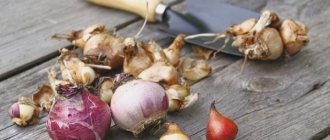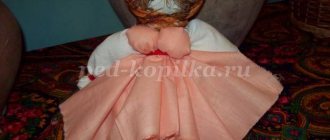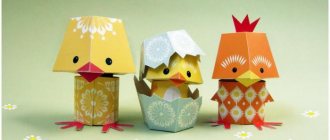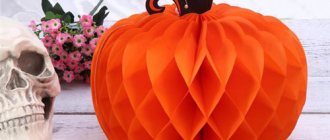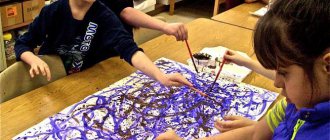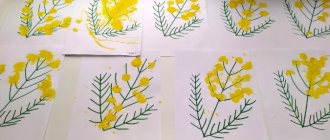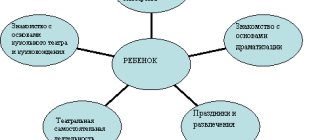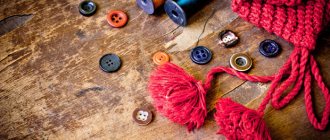Features of modeling in kindergarten
Modeling in kindergarten from plasticine, clay or dough plays a significant role in the education and upbringing of preschool children; it is also a type of art.
Modeling for children is part of the fine arts, with the help of which they display their emotions and the real world around them. Children convey their feelings of worldview. Most often, children's creative materials are clay, plasticine, and modeling dough. They are the most convenient for children due to their plastic properties. Even the simplest object or figure is creativity for children.
During the creation of his creative work, the child receives great pleasure from the plastic properties and volumetric shape of the materials used. When sculpting, a child develops his constructive abilities, eye and precision of hand movements. If the teacher organizes the lesson correctly, then modeling will become a favorite hobby for the child. This type of development of creative ability in children aims not only to develop certain skills and abilities in children, but also, as a priority, to prepare the child for school.
Modeling in kindergarten is used as an aesthetic education for children. Preschoolers are capable of a lot; their abilities depend on knowledge and skills, as well as age characteristics. Taking into account children's age, the shapes of objects and images in their creative solutions are significantly simplified. For example, a person or animal has a round head, cylindrical limbs and torso. Basically, more attention is paid to small, minor details: fins, ears, tail, nose, etc. The child’s main goal is not to create an exact image, but a similar one that he can play with. Most often, children choose to sculpt images from familiar animals that surround them or images of fairy-tale animals from book pictures.
In older preschool age, children already begin to realize what can be beautifully sculpted, and what can be better drawn or made from other materials. During classes, children also master another form of modeling, when they use natural materials and other available materials to create creative works, both to create additional accessories for their figures, and by replacing or supplementing their main components.
There are three types of modeling used in kindergartens:
- Object modeling - the child sculpts a separate object. For children, this is sometimes easier than drawing. Here one figure or image of a person, animal or other object is used, but children begin to produce constructive or plant objects faster and better;
- Plot modeling - depicting the actions of several characters or characters and objects. Subject modeling differs from drawing; there is no background on the plane, zooming out or zooming in with a close-up.
In sculpting, figures have more realistic dimensions and do not depend on the plane. Basically, preschoolers depict a pair of object images that are in a static state. Children do not yet know how to convey other states of images in their creations and do not like to develop plots. For children to play, two characters are enough with whom they will play and even communicate. In the communication between the two characters, there is a plot episode that the child himself comes up with as the action progresses. Already as events develop and acquire greater interest, the child begins to unfold the plot and enrich it with the help of new characters and objects.
Along with play and hobby, plot modeling is a very labor-intensive process for a child. The child will have to create several characters, place them according to the plan and complement the plot with surrounding objects. This is a full-fledged composition presented on a specific platform.
In the child’s mind, at the initial stage, the platform is an ordinary plane on which objects are placed; they are not puzzled by how the bottom should look, attention is concentrated only on the images themselves.
This task faces the teacher of any kindergarten group. He must teach children to design the entire composition: to make a three-dimensional stand with decorative elements, and to logically place objects on the stand correctly.
For example, on a stand there is sculpted soil, grass, flowers, a hole where a fox or mouse lives, a tree with a squirrel. The composition should be similar to a plot from a fairy tale or the surrounding reality. Composition is not only about individual images, but about the relationship between their actions. Plot modeling is only feasible for preschoolers of middle and senior groups, due to its multifaceted diversity, and this requires the necessary knowledge and ideas.
3. Decorative modeling - directly related to the aesthetic education of preschool children, as the teacher introduces and teaches them the creativity of folk craftsmen of various cultures. Modeling is accompanied by painting on the products. Children not only enjoy it, but it also expands their cultural knowledge and fantasy world. Preschoolers love intricate vessels, household items, and dishes with bright colors and a unique appearance.
Older preschoolers, after training with a teacher, are able to create decorative items themselves, which they can play with and even use as design objects to decorate a room, or simply as souvenirs.
With the help of decorative modeling, children learn to think, plan and create sketches of their ideas. Preschoolers should be taught to see beauty with their own eyes. An ordinary salt shaker, mug or vase in the hands of a child, according to the plan and its implementation, can turn into a swan, a plant, or simply become a decorative work of art. Preschoolers use ordinary plasticine, clay and additional accessories to turn an extraordinary thing into something beautiful. In the course of their work, children not only learn how to sculpt, but also how to properly hold and use various tools.
In addition to all the listed advantages, modeling from plasticine develops flexibility, sensitivity and motor skills of the child’s fingers.
Kitten with a heart
On Valentine's Day, you can give not only valentines, but also original crafts. We recommend that you make a kitten from plasticine step by step according to the photo instructions provided.
Sculpting technique:
- From a blue base, mold a body in the shape of a heart, a tail, and ears.
- Connect these parts and stick stripes of a lighter shade on top, creating a “cat” color.
- Make the muzzle, eyes and nose as shown in the photo.
- Detail the animal's face using a stack.
- All that remains is to attach the paws, the heart is made from a red base.
- The holiday craft is completely ready.
Equipment and materials for modeling classes in kindergarten
Typically, kindergarten groups use plasticine, but the possibilities of working with it are limited. The most effective way to use clay in creative work. Fat clay is best. You can sculpt several large objects from it, create objects with subsequent heat treatment for immortalization and paint them. The plasticity of clay can be adjusted with water, which makes the work easier for children.
In education, it is more practical to use clay, since plasticine is intended for small products, and small forms are not able to convey the fullness and clarity of the lines of the details of the figure. Using plasticine complicates activities with young children, since it is quite hard and needs to be constantly kneaded to make it soft, and small children are not always able to do this. Plasticine modeling is more suitable for children with developed finger muscles, at an older age of 5-7 years, but its use should be limited to only a small number of activities.
If the kindergarten has enough budgetary funds, then clay can be purchased at the store, but in rural areas it is easier to dig it up. The clay layer is located directly under the fertile soil layer, so this will not be particularly difficult. Preparing the mixture for modeling is also not difficult. You just need to add water to the clay and knead it, and then put it in a thick cellophane bag, and then the working material can be stored for a whole year. To fire clay, you only need to spend money on a muffle furnace. You will also need paint. Thus, after processing, children's crafts will turn into real ceramic products and souvenirs. Clay itself in its raw form is not a load-bearing material and to make products you will need to stock up on frames.
Ordinary sticks or pieces of wire can serve as frames. The frame must be made in such a way that it can be removed from the product after the clay dries, otherwise the clay on the frame may crack when drying. To draw out individual elements and recesses, you can use plastic knives like in plasticine, spatulas and nails. The better and more conveniently the place for a child’s creative activity is organized, the better the quality of his work. Usually boards are used for the working surface, but it is better to have a rotary machine for ease of working on the product from any side.
In the end, I would like to add that modeling in kindergarten is important for preschoolers for the development of sensory perception. Children must not only see, but also touch objects.
Turtle
Make a small plasticine craft with your child; with step-by-step instructions you will very quickly master the entire manufacturing process. A funny turtle will complement your collection of crafts.
How to sculpt:
- Prepare several circles of different sizes using a brown and green base.
- Use a brown circle to form a “shell” for our turtle.
- Flatten small circles from the brown base and attach them to the “shell”, forming a characteristic color for this animal.
- Sculpt legs and a head from a green base and attach to the prepared body.
- Make indentations on the muzzle where the eyes will be placed, draw a nose and mouth.
- Then attach the eyes too.
